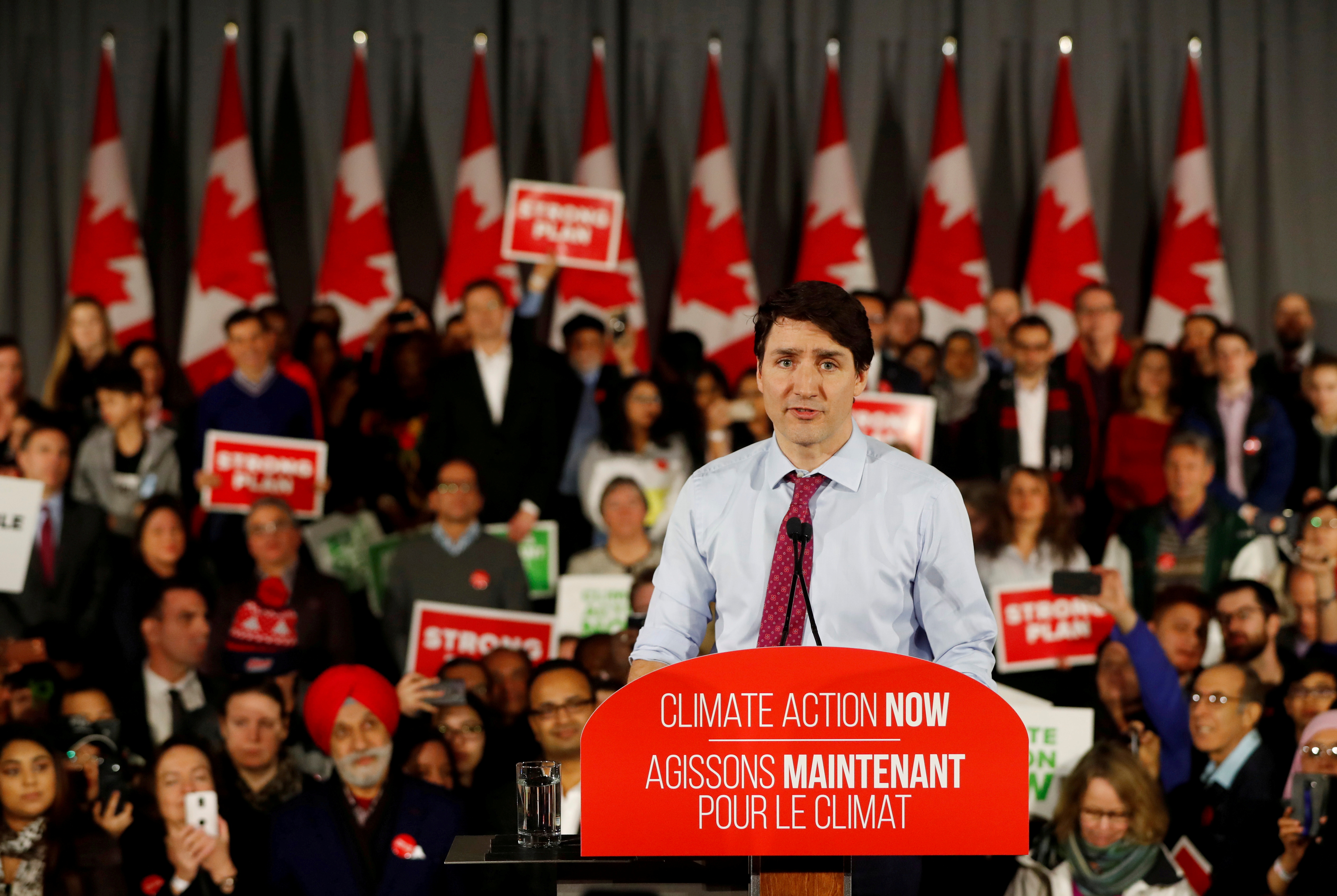
Polling consistently showed the climate crisis was a top issue for voters during the federal election campaign. While the election may have been expensive and unnecessary, there was a silver bullet- it did help get the climate crisis back on the political agenda. Justin Trudeau made new commitments for policies to reduce emissions in Canada and around the world. It’s important to take note of what was said so we can hold the government accountable for their promises.
Firstly there are the things the federal government is currently doing such as the price on pollution, rebates for electric vehicles and phasing out coal-fired power plants; these are all great initiatives that are effective in reducing emissions. Then there are the things the Liberal party promised in the 2019 election but still haven’t gone through with yet because they’ve been dragging their feet.

For instance the Liberals still plan to plant 2 billion trees like they said in 2019, although not one tree has been planted so far. A study published in the journal Nature asserts tree planting is an effective and cheap way to fight the climate crisis. The authors of the study used Google Earth to show there is enough available land mass to plant 1-1.5 trillion trees, and say doing so could help absorb 750 billion tonnes of CO2 from the atmosphere over a few decades- about 25 years worth of CO2 emitted by humans.
Trudeau also promised a Just Transition Act in 2019 to retrain oil and gas workers in Alberta to work in the clean energy sector. A Just Transition Act is a critical piece of legislation because there will never be widespread support in Alberta for the energy transition unless there is a plan for workers after the oil and gas sector is gone. Just two weeks before the election Natural Resources Canada launched a consultation process on legislation for a just transition.
/cdn.vox-cdn.com/uploads/chorus_image/image/55614127/rooftop_solar.0.jpg)
Trudeau reiterated his pledge to end fossil fuel subsidies. A report by Environmental Defence showed Canada spent $18 billion on subsidies and other financial support for the fossil fuel industry in 2020- the highest of any G7 country. The Liberals first promised to end fossil fuel subsidies in 2015. In 2018 they pledged to end fossil fuel subsidies by 2025 along with other G20 countries. Now they’re speeding up the target to 2023.
Some new things the government has promised include more ambitious emissions targets of 40-45% reduction by 2030 from 2005 levels. The new target was announced before the election, but it was a key part of the Liberals’ platform. Canada has missed every emissions target it has ever set, so we need to make sure this time around we actually meet our targets. The Net-Zero Accountability Act which was recently passed will help do this as it requires the federal government to report to Parliament regularly to explain how they plan on meeting their targets and their progress in doing so.

The government also announced an end to thermal coal exports by 2030, meaning coal used to produce electricity as opposed to making steel. This is significant because coal-fired power plants are a major source of emissions worldwide.
Lastly Trudeau said he would cap emissions from the oil and gas sector and have them decrease in 5-year increments starting in 2025. This is very important because the oil and gas sector represent the largest share of emissions in Canada at 26%, so any plan to reduce emissions without addressing it is futile. However most of the emissions are produced at the end of the process in combustion engines, so the focus needs to be on reducing production instead of technologies like carbon capture and storage. For instance when we export oil to the United States the emissions produced in that country from burning our oil needs to be accounted for.

It is up to us to make sure the government follows through on their commitments to plant 2 billion trees, pass a Just Transition Act, end fossil fuel subsidies, meet our new emissions targets, ban thermal coal exports and cap emissions from the oil and gas sector. Of course these measures don’t go far enough; there is still a lot more that needs to be done if Canada wants to do its fair share of keeping global temperature rise below 1.5°C as outlined in the Paris Agreement. Canada could go further by: banning new fossil fuel infrastructure/production; enacting carbon border adjustments by putting tariffs on imported goods coming from countries that don’t have strong climate policies; and by increasing investment in renewable energy, energy efficiency and public transportation. However the measures announced by the federal government are a good start.
